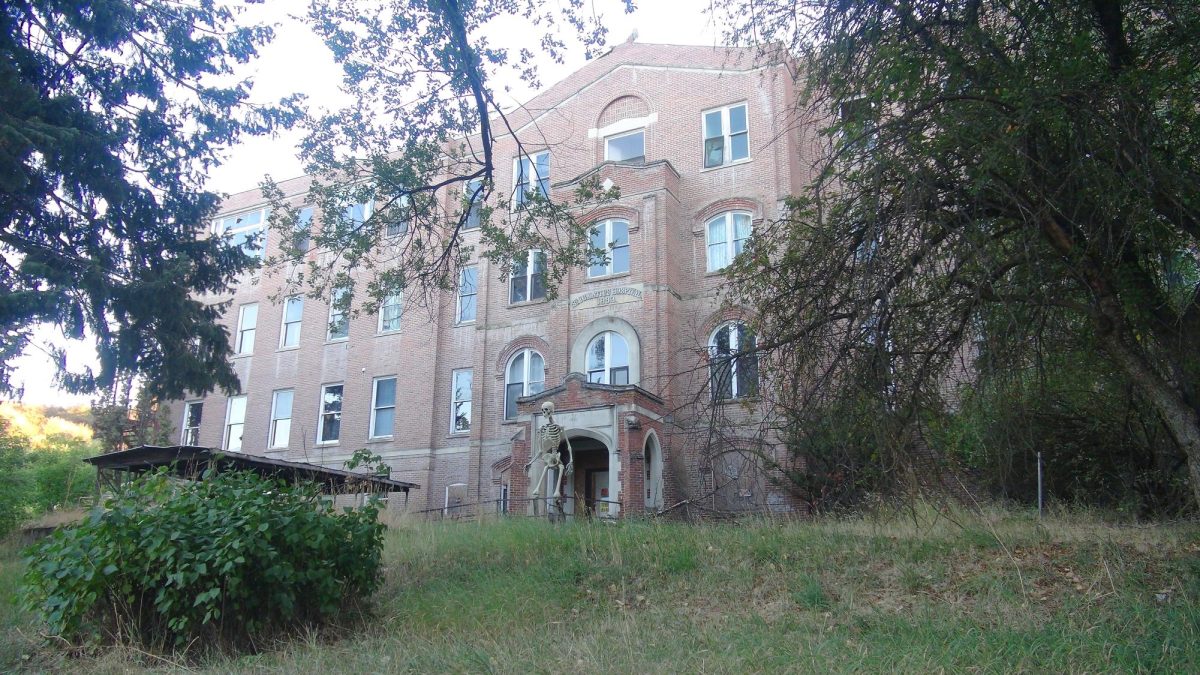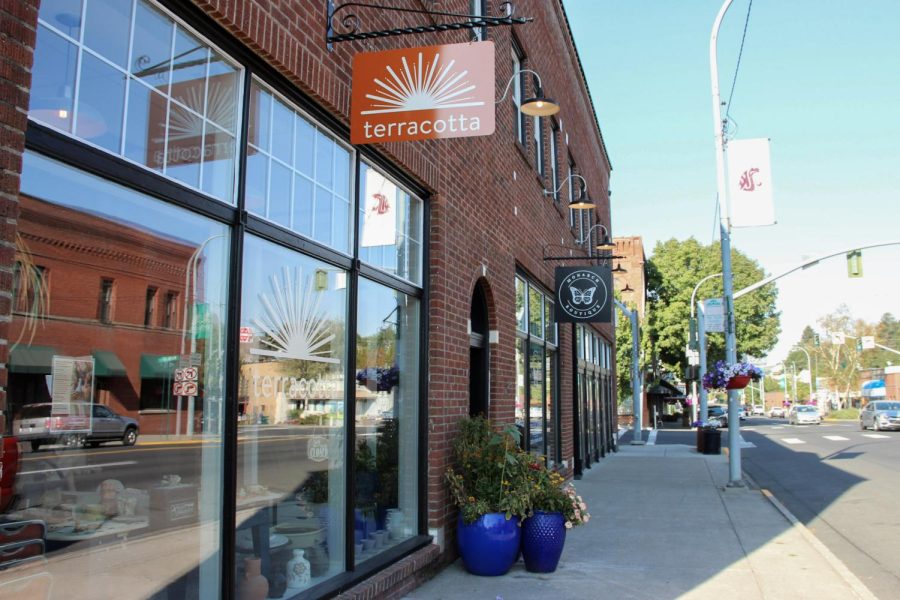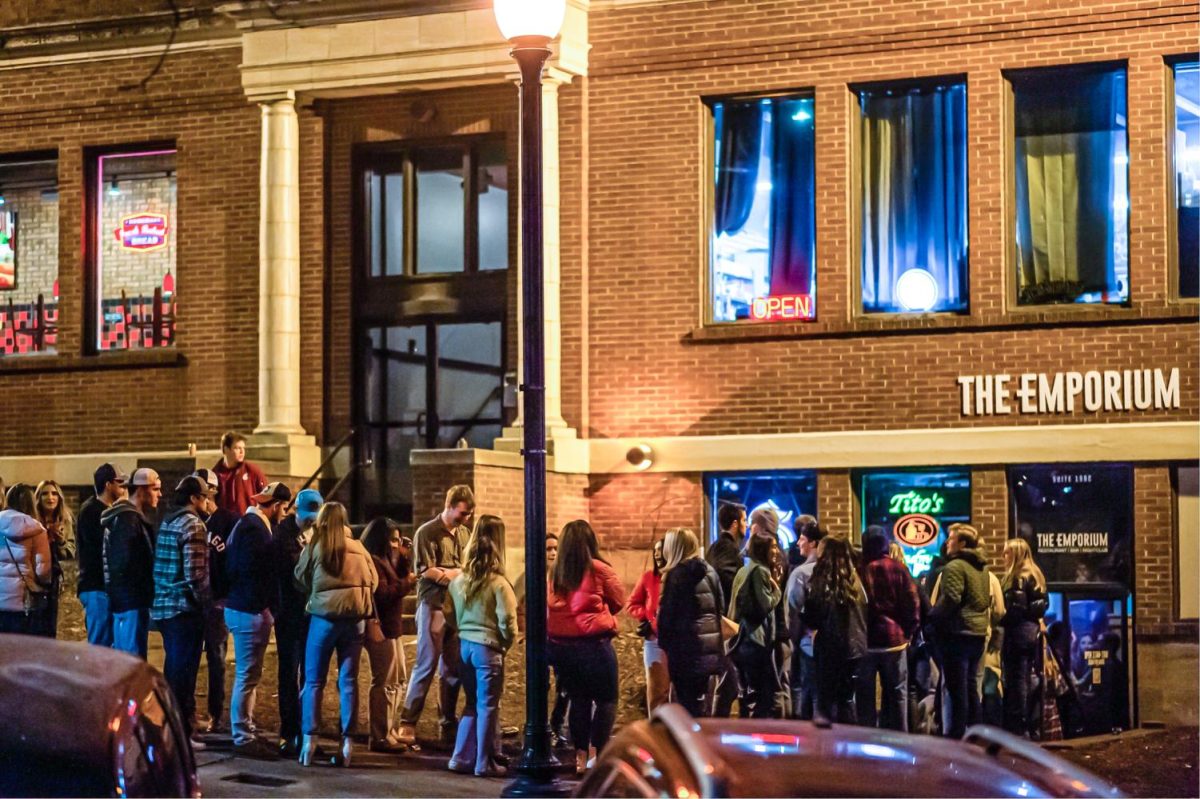When Austin and Laura Storm first saw Colfax’s St. Ignatius Hospital in 2014, they thought for sure someone would do something with the beautiful, yet run-down abandoned building.
“You could kind of tell from the building how much love and care had gone into the building in its inception and in its operation. And you still had a really strong sense of that,” Austin said. “[We] were moved to try to figure out if someone was trying to preserve it.”
No one was. So, the local business-owning couple took matters into their own hands. Seven years later, they bought the 1893-built hospital and began trying to preserve it themselves.
For nearly two decades until the Storms bought it, St. Ignatius was neglected and left exposed to the elements, damaging its infrastructure and building systems, according to its website. In a three-phase project funded by historic day tours and “haunted” night tours of the building, the Storms plan to save St. Ignatius and turn it into a hospitality center.
To do so, the Storms have partnered with the Colfax Chamber of Commerce and Whitman County Historical Society.
“Every year, the building was so much worse than the year before, and we knew that there was a point approaching in the future where it just wouldn’t be feasible to preserve the building anymore,” Austin said. “And so we felt like we were racing against an unknown clock.”
As of September, Austin said he and Laura have worked to stabilize St. Ignatius and protect it from further damage. In addition to the building’s roof, they have redone two other roofs: the roof of an auxiliary nursing school-turned-laundry house and, most recently, the roof of the first-floor kitchen.
The Storms invest some of their own resources into St. Ignatius, but Austin said most of the funding for its preservation comes from the tours — especially the night tours.
Valoree Gregory, Whitman County Historical Society director and another local business owner, started giving those tours in 2015 after the Washington Trust for Historic Preservation put St. Ignatius on its list of Most Endangered Places. Since then, she said over 17 businesses have opened, 42,000 people have visited and downtown Colfax has thrived.
“We used St. Ignatius money to save downtown Colfax. And so now I tell Colfax, ‘Hey, it’s time for Colfax to save St. Ignatius.’ And that’s exactly what’s happening now,” said Gregory, who was born in the hospital. “Everybody has embraced the fact that we’re saving this historic building and that it stepped up and saved them.”
The architect of St. Ignatius was Mother Joseph Pariseau, a nun who designed dozens of hospitals, academies and other buildings in Washington, Idaho, Oregon and Montana. It was the last hospital Pariseau designed before she died in 1902 and is the only one she designed left.
Until Pullman’s Finch Memorial Hospital opened in 1928, St. Ignatius was the first and only hospital in Whitman County, operating until the late 1960s when it was replaced by Colfax’s Whitman Hospital and Medical Clinic.
St. Ignatius then operated as an assisted living facility for developmentally disabled adults until 2003.
“These [buildings] give community identity, an identity that doesn’t look like anybody else,” said Patrick McDonald, son of former owner Roy McDonald and assistant to the Washington secretary of state. “St. Ignatius doesn’t look like anything else… That building, the placement in Colfax, its striking location on the hill. It all adds to that.”
Because of St. Ignatius’ condition and architectural, historical and economic importance to the Colfax area, it has been on the Trust’s list of Most Endangered Places every year since 2015.
Besides St. Ignatius, Whitman County has two others on the list: St. Elmo’s in Palouse and the Rock Houses and Station in LaCrosse. Other Endangered Places include The Chancery in Spokane, East Seattle School on Mercer Island and more across the state.
Colfax, whose population of less than 3,000 has not changed for the last century, did not incorporate as a city until 1872. So, McDonald said Colfax may not have the economic ability or historic mindset of cities like Spokane and Walla Walla to preserve buildings like St. Ignatius.
“One person’s cause is another person’s decrepit, old building,” McDonald said. “And so it all depends. Some people don’t feel connected with the building.”
With St. Ignatius, some do. And the Storms plan to save not only the building itself, but its history.
Though they could not recover many artifacts from when the building was a hospital, the Storms are collecting artifacts connected or contemporaneous to that era. These artifacts, which range from photographs to medical equipment, are on display in rooms throughout St. Ignatius. Certain rooms feature informational plaques; Gregory said she always incorporates the history of the building into her tours of it.
No matter how the Storms reuse St. Ignatius, Austin said he and Laura want to preserve the building’s oldness while giving it new life.
“When you’re so invested in old buildings and old furniture, that sort of thing, you can kind of take the value of those things for granted,” said Austin, who co-owns two vintage stores with Laura. “But I think part of the value of old things is the stories that they tell: our past way of life, and the lives of people that aren’t around anymore.”
To book a tour of or donate to St. Ignatius, visit its website. All donations are tax-deductible through the Storms’ partnership with WCHS.
















